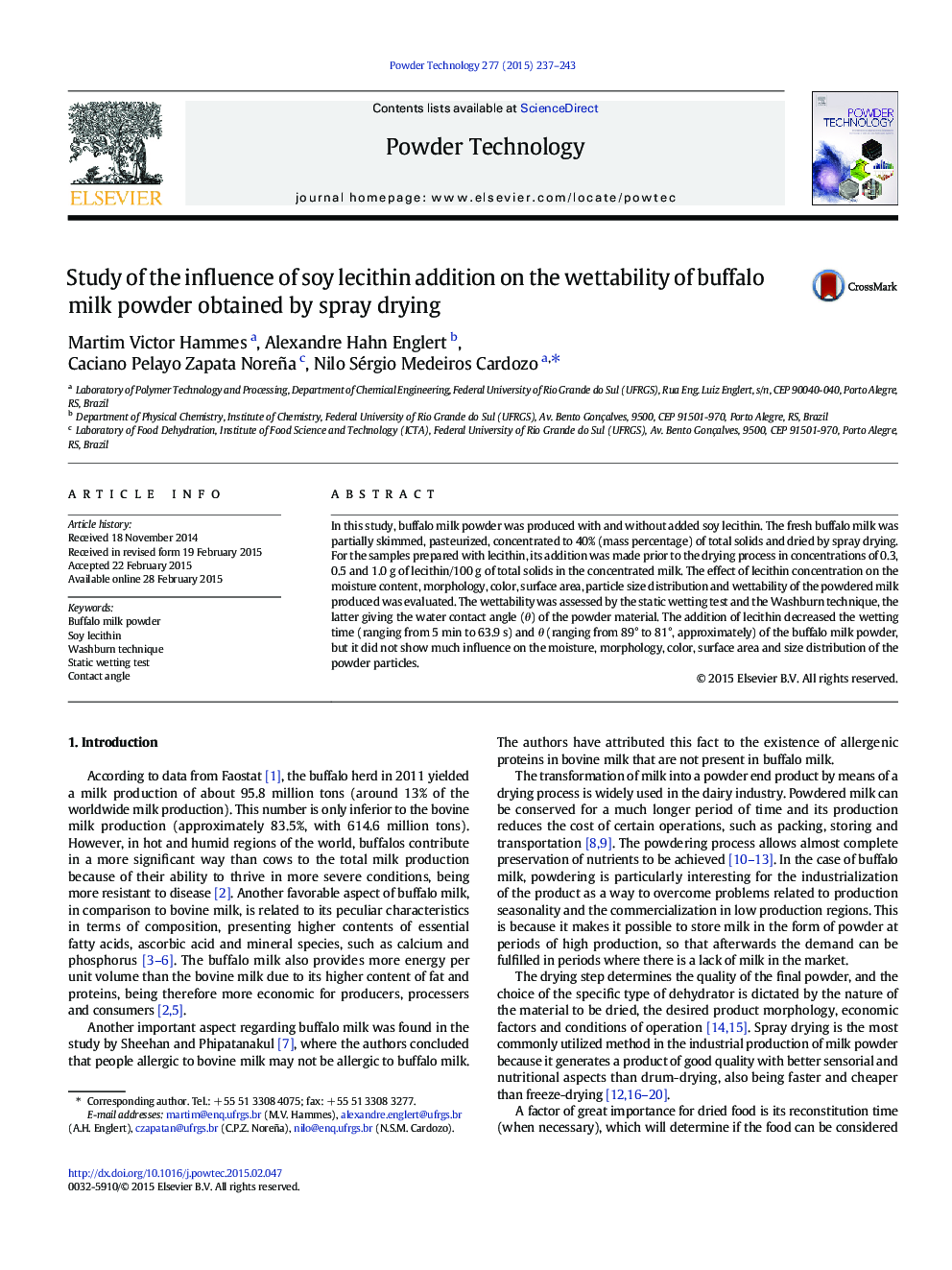| Article ID | Journal | Published Year | Pages | File Type |
|---|---|---|---|---|
| 235774 | Powder Technology | 2015 | 7 Pages |
•Buffalo milk powder, with and without soy lecithin, was obtained by spray drying.•Powder wettability was assessed by the static wetting test and Washburn technique.•Lecithination decreased wetting time and water contact angle of the milk powder.•No influence of lecithin was found on other powder properties (e.g., moisture).
In this study, buffalo milk powder was produced with and without added soy lecithin. The fresh buffalo milk was partially skimmed, pasteurized, concentrated to 40% (mass percentage) of total solids and dried by spray drying. For the samples prepared with lecithin, its addition was made prior to the drying process in concentrations of 0.3, 0.5 and 1.0 g of lecithin/100 g of total solids in the concentrated milk. The effect of lecithin concentration on the moisture content, morphology, color, surface area, particle size distribution and wettability of the powdered milk produced was evaluated. The wettability was assessed by the static wetting test and the Washburn technique, the latter giving the water contact angle (θ) of the powder material. The addition of lecithin decreased the wetting time (ranging from 5 min to 63.9 s) and θ (ranging from 89° to 81°, approximately) of the buffalo milk powder, but it did not show much influence on the moisture, morphology, color, surface area and size distribution of the powder particles.
Graphical abstractFigure optionsDownload full-size imageDownload as PowerPoint slide
